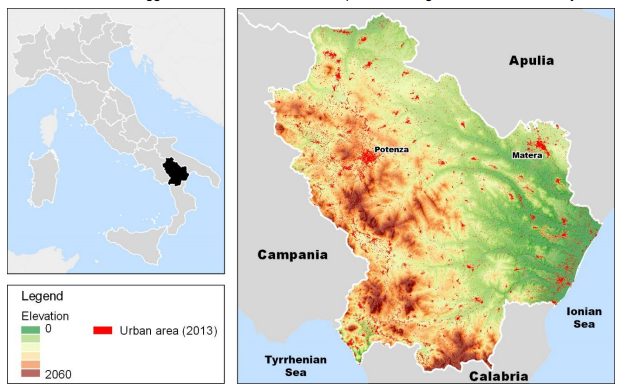How to conduct Agent Based Modelling In Economics for your PhD Dissertation
Introduction
The Emergence of a New Scientific term, the “complexity science” have been witnessed in the last three decades of this era. It is a concept of varying perspectives and is somewhat an amalgamation of several methods, models and metaphors from different disciplines. Hence, with time complexity have been studied in a variety of subjects, Including Economics.

The complexity era in economics gave rise to a lot of studies with actions being generated from abstract rules. These studies in turn gave rise to a class of models that simulate the actions and interactions of a number of autonomous agents in a complex situation, the Agent Based Modelling (ABM). In several disciplinary contexts, ABM has become a fashionable Methodology while it has also opened up a lot of debate in the field of economics.
Shift to ABM from cellular automata
Automata was initially developed by Von Neumann in the year 1951. The agent-based modelling approach finds its roots in the cellular automata. Cellular automata was further studied in the 70’s by Conway and Tuffoli.
Automata actually grew further in the 80’s when Wolfram, the founder of Santa Fe Institute worked on it, which worked like a real catalyst in his computerized complexity.
It is of no doubt that the Agent Based Modelling has its origins in the cellular automata. The cellular data which had a computational perspective was combined with an adaptive individualism of methodology, established the ABM. With the Academic Success of the SFI and increasing computerization of science, the success of the Agent Based Modelling is explicitly associated with O’Sullivan and Haklay.
The ABM has been used in a large number of fields like that of voting, military tactics, epidemics etc. impossible to keep a count.
Implications in Economics
With its origin in the SFI in the mis 80’s, the ABM is now the most widely used tools for capturing the complexity of the Economy. This approach allows economists to associate human behaviors with algorithms of abstract nature to describe agents’ fundamental behavior. That is to say, formulation of models in terms of computer programs are done for which inputs are taken as characteristics of agent behavior. Then there is association of outputs with macro level which in turn is a result of micro interactions of the agent.

Figure territory of the Basilicata region in the south of Italy [2]
The works done using ABM in economics can hence be methodologically classified in the following manner:
- The deductive approach: the classical and methodological individualism used in economics is the perfectly rational Agent Based Modelling. An optimization of theoretical constraints in a rational manner defines the rules of interaction. The addition of individual’s characteristics deduces the system’s macroscopic behavior.
An intuitive or deductive framework chooses the assumptions for the determination of a set of interactions that is defined mathematically. These set of interactions are then combined with perfect additivity of agents which is assumed, for the estimation of aggregative rule at the macro level.
- The methodological approach: in contrary to the earlier perfectly rational approach of Agent Based Modelling, this approach makes use of a large number of iterations made in the computers for deduction of macro level. But this is the actual approach that associates with the origin of Agent Based Modelling in the SFI in the 80’s. In this approach, there is integration of heterogeneity and autonomy of agents. This approach doesn’t need the perfect rationality condition and assumptions are made by an “intuitive plausibility” which means there is calibration of micro interactions for meeting heterogeneity of agents that are observed.
- The phenomenological approach: this last category refers to Research aiming at reproducing of existing data of statistics. In the previous categories, authors have depended on empirical studies which have previously shown a persistent statistical and economic data. The association of the macro statistical pattern observation is with the identification of a phenomenon which is discernible discernable and noteworthy.
Once identification of the phenomenon is done, statistical macro properties are entered as input for micro interaction calibration after which, macro patterns initially observed are generated. In other words, empirical determination of assumptions is done to fit the data. The real target is the definition of potential micro interaction that are likely to generate macro patterns that are initially observed.
Recent Research Topics IN ABM
Small-scale irrigation has been promoted in recent years because it not only tackles long-term neglect and underinvestment by government authorities, but it has also been shown to be more cost-effective than large-scale irrigation [6]. The increased autonomy of individual irrigators, which motivates the creation of the agent-based modeling tool in this research, is one of the advantages of small-scale irrigation. To advance small-scale irrigation development planning and to expand on the work of, we present a groundbreaking agent-based model that overcomes the limitations of the previous optimization-based approach. By decomposing the real-world system into a large number of agents and simulating the actions of agents at the individual level, agent-based modeling offers a bottom-up approach to modeling complex coupled natural-human systems.
As a result, the decision to use small-scale irrigation for dry-season agricultural production is simulated at the farm level, and irrigation growth capacity is estimated based on the spatial trend of small-scale irrigation adoption that emerges from the micro-level simulation of irrigation adoption behaviors. We consider agent-based modeling as a more suitable technique to simulate small-scale irrigation because small-scale irrigation is basically a distributed system and there is no central agency in charge of the adoption decisions of small-scale irrigation technologies.
ABMs are simulations in which artificial entities communicate over time in personalized environments [3]. That is, ABMs attempt to replicate individual processes such as movement, actions, birth, development, and death based on a collection of data such as genotype, history, and agent position (i.e., crucial components of the analysis). Furthermore, ABMs provide unrivalled control and statistical power by allowing any number of agents to be defined and their interactions observed over time. [5]
RECENT RESEARCH STUDIES IN ABM
|
Reference |
Problem Identification | Developed Model | Simulation tool | Solution |
|
[1] |
Investment in small-scale irrigation may provide a solution to address the challenge by extending crop production into the dry season. | Agent-based modeling approach with an application to Ethiopia | Environmental suitability analysis, SWAT simulation and SPAM |
Reduce the negative environmental impacts of small-scale irrigation development |
|
[3] |
Paradox requires an understanding of human
adaptation to drought by mapping individual farmers’ water conservation decisions to the dynamics of the basin-wide water demand |
Agent-based agricultural water
demand (ABAD) model |
Netlogo |
ABAD model revealed a mapping between the basinscale rebound phenomenon and the socio-economic factors in individual farmers’ water conservation decisions, which can help understand the rebound phenomenon and possibly control it through future long-term water policies. |
| [4] | new challenges related
to the e-commerce integration—the customization in order to be competitive enough, a sustainable logistic process (i.e., guarantee the optimum provisioning and delivery of goods), and a company internationalization |
Agent-based simulation model |
Individual-based simulations | Use of horizontal cooperation clearly improves the economic and service
quality performance of the e-grocery distribution |
Conclusion
This term Agent Based Modelling is now widely used in the Scientific Literature and has almost become a buzzword. The work profusion dealing with Agent Based Modelling needs to be clarified for the better understanding of the lines of, which this approach has paved in economics.
The structural sensitivity of the agent-based agricultural water demand (ABAD) model will need to be assessed in future studies. In other words, comparing the model’s success under the theory of bounded rationality to other social theories in the BRB is important Furthermore; research is required to collect more data on the ABAD model’s socio-economic factors in order to improve model calibration and validation. We assume that socio-hydrological problems are location-specific, making the creation of a generic model or transferable methods difficult. However, since the ABAD model is based on a general social theory (i.e., bounded rationality theory), applying it to other case studies will help with comparative analysis and the development of a more generalized model. The calibration and evaluation of future simulation-based researches will be aided by the ad hoc concept of horizontal cooperation policies that are currently in place on logistics-related services. Practical problems, on the other hand, should be investigated and incorporated into optimization models. This applies to how the coalition shares advantages and costs, as well as how the coalition works together.
References
- Xie, H., You, L., Dile, Y. T., Worqlul, A. W., Bizimana, J. C., Srinivasan, R., … & Clark, N. (2021). Mapping development potential of dry-season small-scale irrigation in Sub-Saharan African countries under joint biophysical and economic constraints-An agent-based modeling approach with an application to Ethiopia. Agricultural Systems, 186, 102987.
- Saganeiti, L., Mustafa, A., Teller, J., & Murgante, B. (2021). Modeling urban sprinkling with cellular automata. Sustainable Cities and Society, 65, 102586.
- Ghoreishi, M., Razavi, S., & Elshorbagy, A. (2021). Understanding Human Adaptation to Drought: Agent-Based Agricultural Water Demand Modeling in the Bow River Basin, Canada. Hydrological Sciences Journal.
- Serrano-Hernandez, A., de la Torre, R., Cadarso, L., & Faulin, J. (2021). Urban e-Grocery Distribution Design in Pamplona (Spain) Applying an Agent-Based Simulation Model with Horizontal Cooperation Scenarios. Algorithms, 14(1), 20.
- Jackson, J. C., Rand, D., Lewis, K., Norton, M. I., & Gray, K. (2017). Agent-based modeling: A guide for social psychologists. Social Psychological and Personality Science, 8(4), 387-395.
- Macal, C. M. (2016). Everything you need to know about agent-based modelling and simulation. Journal of Simulation, 10(2), 144-156.



